Reset
(text) patrick brennan
Randee Silv (images)
June 2016
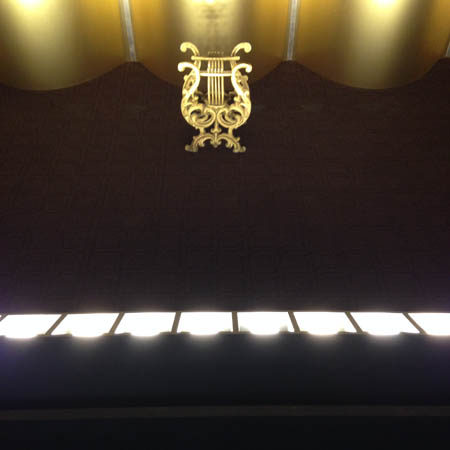
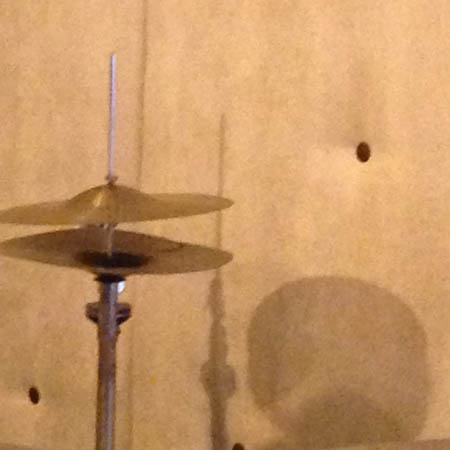
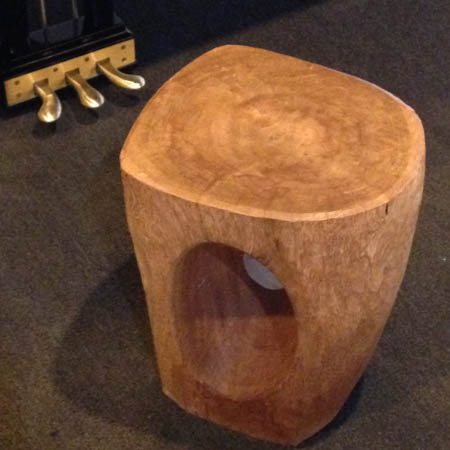
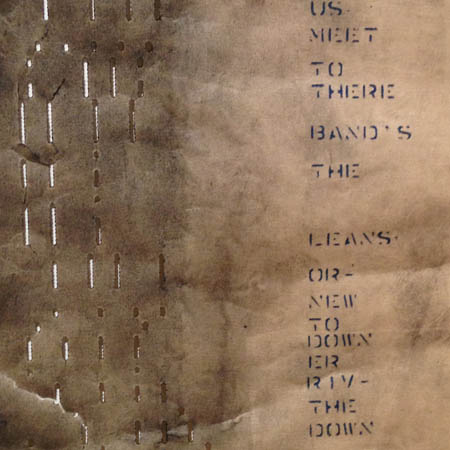
A room full of numinous objects.
A Steinway baby grand that plays itself in an invisible trio — bass viol sidewise in its leatherish case on the horizontal floor — an old-school trap kit amid a reconstruction of the stage of the Three Deuces — 72 West 52nd Street, New York (June 1943 – August 1953). As if Ashanti, a carved wooden stool sits before the piano keyboard.
… Art Tatum, Charlie Parker, Coleman Hawkins, Dizzy Gillespie, Max Roach, Miles Davis, Charles Mingus, Roy Eldridge, Tommy Potter, Errol Garner, Ben Webster, Duke Jordan, Oscar Pettiford …
596 Lenox Avenue: the Savoy Ballroom (March 12, 1926 – July 10, 1958), 10,000 square feet, 4,000 person capacity (Can you dance?). A constructed parallel to one of the 2 Savoy Stages (that merry-go-rounded way before Kool Herc turntabled replicas or when, still later, all that action and process eventually got outsourced to the quantizer and so forth). 9 panels curve from a backdrop wall into an overhang. Fabric extends upwards in each, repeating a circular motif cut 9 ways, concentric arrows rotating alternately clockwise and counter, formally clear and cool while hinting spirality and the swoon of syncope.
A (paper mache?) mask of ancestor Fats Waller’s head stands upside down on the top of its hat near a wall on the floor.
On the walls are framed sheets of paper once pressed upon by charcoal coated fingers playing across a piano keyboard. Pianoforte Shrouds of Turin: accumulations of all the human funk and sweat that’s transformed the instrument’s possibilities and all those sounds — and the shadows of what all this costs.
On an opposite wall are 2 well worn player piano rolls of Basin Street Blues.
A glass display case with 2 sets of woodblocks (Chick Webb?).
I could, of course, be wrong about all of this. An interview I read with the artist is decidedly secular, emphasizing a sort of cultural archaeology, an anthropology of the working spaces of the black (and aesthetically black) musician during a particular time period (He asks how, for example, could one of the most outspoken, boundary challenging figures in the music — Max Roach — have to play backed into a corner at the Three Deuces? One can wonder if the placement was merely practical regarding space and acoustics — or could there really be more weight in this metaphor?).
One could also wax all artworldly and speculate about the example of David Hammons’ body prints or about the state of contemporary art installations, or whether the charcoal pieces are visually “interesting” without considering the associations they illustrate, or whether that matters; or one could ask why the “art world,” why a gallery at all — or, why not? Which boundaries are being fiddled with which way? We also have to consider that the African diaspora itself was induced by the strict application of market values to persons of that continent and that African ways (and wills) to live have adapted to and co-opted versions of the market mindset ever since to the purposes of its own survival and profusion — regardless of whatever a purchaser may think is going on.
Outside the main exhibition space in the gallery foyer reside significant items for sale in a display case: Duke Ellington quarters, $1.50 a piece (I just had to have one), a whole roll for $60. Also for $60: t-shirts from the Church of John Coltrane in San Francisco. Count Basie’s watch (Bill, that wry wizard of time and space) embedded into a small meteor. Monk on the cover of Time Magazine. Billie Holiday holding 2 diminutive doglets on the cover of Tan Magazine. A handwritten, personal letter from Sonny Rollins recalling the importance of Fats Waller and Louis Armstrong during his very early youth.
But, what about those witnesses to the exhibit who don’t know the stories and spirits, who’ve never heard of 52nd street or Charlie Parker (and, if they were to hear those sounds in earnest, might seriously contemplate running back quick to the gated community security of their I-Pod playlists) and are otherwise disinclined to consider Parker’s sonic demonstrations as potential models of how to live? What might they notice? Do these, can these, objects speak to them without they themselves bringing the experience and the history to them, or must all this depend in these instances on an outside, explanatory text? I can’t say. Are these objects to be regarded as “art” simply because being in a gallery says that they are; and is that the necessary interpretive framework? I‘m not so sure.
Recorded sounds emanate from within the staged Savoy stage, sounds far from, yet close beneath, the celebratory soundscape of the Savoy: hammers, tools meeting the ground, voices singing (perhaps sounds from prison regulated hard labor in the South some time ago), all cut and reprocessed via the current apogee of high tech — fragmented, glimpsed, reconfigured, haunting and saturating — ghost sounds of transcendence. Occasionally the piano plays itself in an uncanny conversation with these sounds. One can see the shapes modulating on the keyboard as the depressed keys dance around. Mystery. Voices without bodies. Persistence of the invisible.


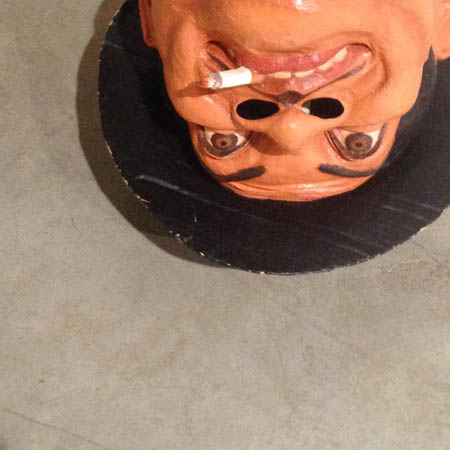
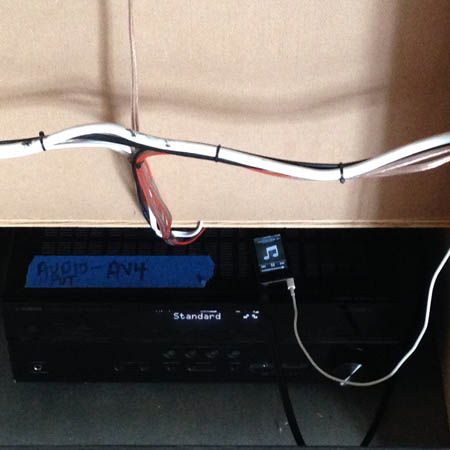
Together as The Bandwagon, Jason Moran with drummer Nasheet Waits and bassist Taurus Mateen delivered 4 performances on the nouveau Three Deuces stage on June 11th and 12th (I caught the last of these where they were joined by saxophonist Ingrid Laubrock). The surface of Moran’s pianism may sound a lot less radical and acerbic than Ellington, Monk, Weston, Hill, Nichols, Few, Taylor, etc., but I hear that surface smoothness (often much closer to the backdrop ambience favored in a lot of R&B and Hip Hop) as a component in a sort of pan-directional inclusivity within Moran’s aesthetic worldview (he’s no apostle to category). The group segued at one moment into a bridgeless version of Body and Soul (a variety of which they’d recorded over 10 years before), reharmonized and melodically tilted just enough to be almost unrecognizable, occasionally diverting to vamp for a while on a single phrase. Personally reconfiguring music is itself no new thing (bebop being only the most obvious example), but I think that Moran has cannily and consciously integrated some of the procedures and perspectives of post-musician, producer generated electronic musics such as Hip Hop: sampling (quotation), loops, cut and paste, sonic alteration, recontextualiztion. I hear the same sensibility at work in the electronic sounds emanating from the reSavoy stage. Of course, being as broad, alert and alive as it is, there’s a lot more going on in his music than that.
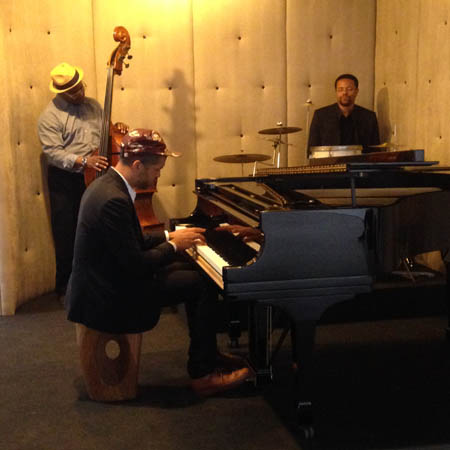
Jason Moran: STAGED
Luhring Augustine Bushwick
April 29 – July 30
